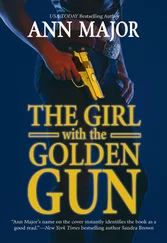Many of our most ardent supporters of firearms regulation became so a bit late, after the grotesque tragedy of gunshot violence had already speared their lives. Pete Shields founded Handgun Control Inc. after his son was shot dead in the infamous Zebra killings in San Francisco. Sarah Brady joined the cause after her son picked up a family friend’s revolver. A Sandston, Virginia, woman, Beryl Phillips-Taylor, began her crusade when she received a mailing from the NRA addressed to her son, who had been shot dead by a classmate two years before. “Hell flew in me,” she told a Baltimore Sun reporter. “There is a misconception by the general population that murder happens to others. The truth is that murder has no barriers. It can happen to your child just as easily as it happened to mine.”
Today more Americans of all races, classes, and ages are being touched by gun violence than ever before. The gunplay, indeed, seems to come closer and closer to home. In the course of my pursuit of Nicholas Elliot’s gun, I learned that the brother of an old high-school friend had been shot dead following an argument. On hearing this I remembered an afternoon in my teen years when this friend led me to his father’s bedroom and pulled a large auto-loading pistol from under the mattress, just to show me. I felt a mix of excitement and terror and asked him to please put it back. Another friend, an avid shooter, told me over lunch how as a college student he along with two friends had been kidnapped at gunpoint, but managed to escape. In June 1993, when Gian Luigi made his assault on a San Francisco law firm, a friend of mine was hard at work in his office a few floors above. In March 1992 a wealthy young bachelor who lived a few doors from my house was murdered in his company parking lot, shot once in the back of his head apparently by a car thief who wanted his $85,000 BMW. On the day the man’s mother put her dead son’s house on the market, the for-sale sign was emblazoned with cheery balloons and an extra signboard that called the place an “American Dream Home.”
The spreading violence evokes the forecasts made by AIDS researchers in the early days of the epidemic. As the disease gained momentum, forward-looking doctors warned that a time was fast approaching when the disease would cease to be a “gay” crisis; that every American, regardless of race, income, or sexual inclination, would soon know someone who was dying of the disease. The same, I think, can now be said of gun violence.
So what are we to expect in coming years if we continue on our current course? Will things get better on their own, and this era take its place beside the great hard times of history? Or will conditions simply worsen? Many of us already send our kids to child self-defense courses. When, I wonder, will some enterprising company introduce the first bulletproof vest for kids?
Prophecy is a dangerous pursuit, but some trends seem certain to continue gaining momentum for a good while to come. We will see, for example, a proliferation of more advanced and lethal variations on legal weaponry, such as guns with built-in laser sights and ever-more-powerful handguns, including more models built to fire .50-caliber bullets, the largest caliber allowed for unrestricted sale.
We will witness, and soon, firearms massacres conducted in realms we now naively consider off-limits to even our most craven killers. Schools are now accepted killing grounds—what Nicholas Elliot did is old hat. Post-office massacres do not surprise us either. The link between postal workers and random gun violence is now well-established in contemporary mythology, causing us all to contemplate that trip to the post office just a little more carefully than we did in the past. Law firms have been done. So have playgrounds and public pools.
What remains? Well, churches certainly. Funerals. Grocery stores. Museums. Baseball games. Hospitals—well, perhaps not hospitals. Most major urban hospitals have already felt the unaccustomed sting of violence in their sterile corridors and have already stepped up security.
We can in the next few years expect to see metal detectors turning up at the entrance doors of an ever-wider array of institutions, such as malls, emergency rooms, elementary schools, and fast-food shops located in perilous neighborhoods. This last may be of limited value, however. Another neighbor of mine was held up at the drive-through window of a Wendy’s restaurant located a few blocks from our homes. She had been hungry when she drove up to the window. When a robber pointed a gun at her head as she waited in line, her appetite disappeared.
The question is, when will we as a culture get the point?
In discussing this book with my editor and her marketing associates, we all came to the same conclusion. This book would never lack for a promotional tie to a national news event because a new massacre was bound to occur within the viable lifetime of the book, and this massacre would be more horrifying than the last.
When will we as a culture stop seeing gun ownership as a God-granted right, so precious as to be nurtured and preserved at the cost of thirty thousand corpses a year; when will we at last demand that all those armed patriots out there first demonstrate a little responsibility and recognize that while they are in the woods waiting for that eight-point buck to wander within range, a newly released felon in Nebraska is buying a gun to blow his ex-girlfriend away, a kid in East Baltimore is tucking a .45 into his belt to defend his lunch money, a toddler in Chicago is aiming the family gun at his baby brother, and a drunken husband in Beverly Hills is climbing the stairs to teach his wife a lesson she will not soon forget?
We can solve the problem of firearms violence. The National Rifle Association and its homicidal allies in Washington would have us believe otherwise, but we can solve this. We have solved other equally intractable, even comparably lethal, problems. We have awakened to the dangers of smoking to the point where smokers are now an embattled minority. We have virtually eliminated polio, smallpox, and the German measles. We have controlled highway litter and sharply reduced the presence of lead in our lives—atmospheric lead, that is. Anyone who has been to a recycling depot lately and seen young and old dutifully sorting colored glass from clear cannot help but marvel at how much we as a culture have changed our wasteful ways.
The nation’s success in reducing the death rate from traffic accidents provides the best model of what could be done with guns. Through a combination of lower speed limits, increased enforcement of drunk-driving laws, public service advertising campaigns, strict regulation of car safety, and nationwide monitoring of the causes and characteristics of traffic accidents, the death rate has declined to the point where public health researchers expected it to fall, by the turn of the century, below the death rate from firearms.
America’s gun crisis cannot be solved just by limiting the proliferation of guns and mandating responsibility on the part of gun owners. Solving the problem requires far more fundamental change. Where now our cities consider it an accomplishment simply to keep school-kids from getting killed, we must have excellent schools that cause hope to blossom. A true, full-scale National Service program might be a good start, offering interesting and creative jobs in far-flung portions of the country. Safe, clean housing for America’s poor would be nice too, in place of the somber, stinking temples of despair that ring most of our biggest cities. Vital too is federal recognition that times have indeed changed, that women do raise families all by themselves, that many couples need two incomes just to survive, and thus that access to good, safe, nurturing day care ought to be near the top of the nation’s domestic agenda, rather than at the bottom. All these are, or should be, obvious requirements. And these are just the minimum. We will have to fix much more in America if we are to slow the rise and expansion of gun violence.
Читать дальше
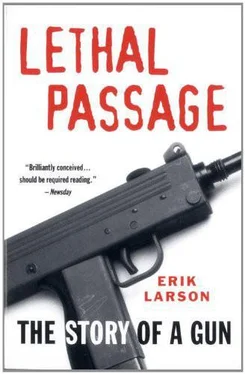
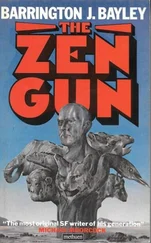
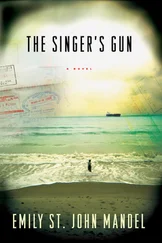

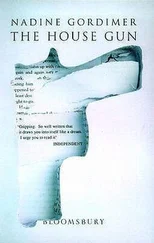

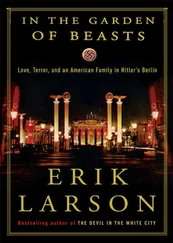

![Ричард Деминг - Whistle Past the Graveyard [= Give the Girl a Gun]](/books/412176/richard-deming-whistle-past-the-graveyard-give-t-thumb.webp)
